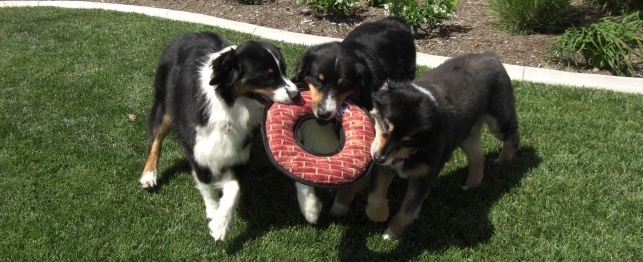Shelters are filled with dogs that didn't live up to owners' expectations. A well-behaved dog will be an invaluable addition to your family. It isn't that hard to have this kind of dog.
One of the key factors in successfully training a dog is the commitment to devote sufficient time to the practice and to stick with a consistent schedule. Dogs learn from consistency and repetition. Simply being with your dog on a regular basis will help him to recognize you as someone who is reliable and consistent. These two qualities can help you become the leader.
You should start training your dog when it's a puppy. If you acquire a dog later in its life, then start training it immediately. This is not a hard and fast rule, but young dogs do respond better to training. If you train your dog when he is young, then he will grow up behaving well.
Dog's deserve more freedom as their training progresses. This balance between obedience and freedom will provide your dog with a very satisfying life. Just be careful that you do not allow too much freedom, too quickly, as this can quickly derail your hard work and training.
Learning how to show authority is the foundation of all dog training. The dog will have little respect for you and it won't obey if you do not show that you are the one in charge. Always walk in front, in the leadership position, letting your dog follow behind.
What is your dog's diet like? Like kids, dogs can become inattentive, hyperactive, and bratty when they have an unhealthy diet. If you switch brands of dog food to reflect the unique needs of his breed, your pet will become happier and more energetic--the perfect companion. Talk to your vet to learn the nutritional needs of your dog.
If you have guests, tell them how to deal with your dog. An excited dog, however, will jump up on guests and be more likely to disobey commands.
When training a dog, always use consistent verbal and hand jesters. Dogs respond well to consistency and will soon associate a specific hand jester or verbal command with the appropriate action. Being consistent is key. If you can do this, you will find much more success when training your pet.
Just like humans, dogs all respond in their own ways to various training methodologies. A calm and relaxed dog will respond well to positive reinforcement, but dogs with aggressive personalities may need some negative reinforcement before they will respect that you are in charge. Never be afraid to try a new training style if your current one is not effective.
Do you have a dog that pulls at the leash? You aren't alone in this, but it is easy to fix! Go to your local pet store and purchase a cheap harness. A harness can significantly reduce pulling, which will cause your walks to be more fun.
When you know that you need to be gone for a few hours, take your dog for a long walk before you depart. If your dog is exhausted, he won't experience as much anxiety when you leave.
If you invest the time in proper dog training, you will enjoy your pet's company. At this time, it may seem as if your dog might never behave, however; if you stay the course on training, it will not be long before you notice great results. Take what you've learned here to heart, and you'll be a successful dog trainer.

 Safe Chew Toys for Your Dog
Safe Chew Toys for Your Dog
Safe Chew Toys for Your Dog
Safe Chew Toys for Your Dog
 Playing Tug of War with Your Dog
Playing Tug of War with Your Dog
Playing Tug of War with Your Dog
Playing Tug of War with Your Dog
 Games for Dogs: Bobbing for Biscuits
Games for Dogs: Bobbing for Biscuits
Games for Dogs: Bobbing for Biscuits
Games for Dogs: Bobbing for Biscuits
 How Much Exercise Does My Dog Need?
How Much Exercise Does My Dog Need?
How Much Exercise Does My Dog Need?
How Much Exercise Does My Dog Need?
 Dog Dudes: Surfing Dogs
Dog Dudes: Surfing Dogs
Dog Dudes: Surfing Dogs
Dog Dudes: Surfing Dogs